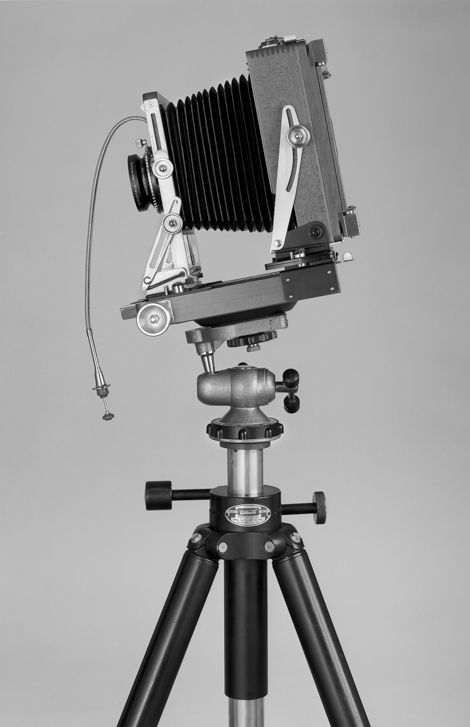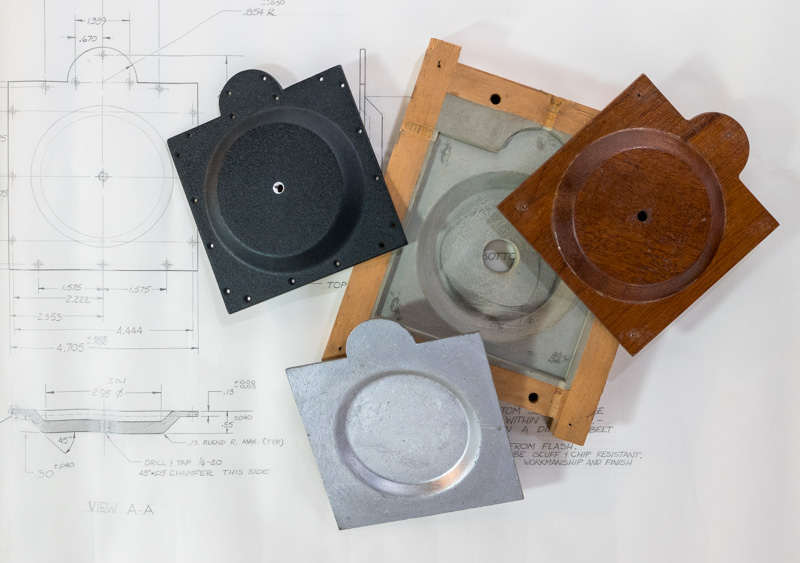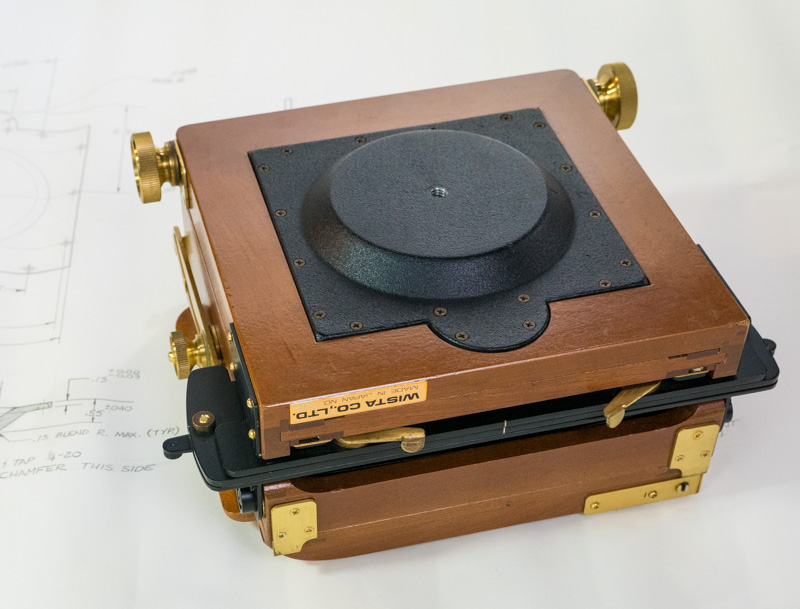
Mike - here's the page that shows the photos and their location. The captions underneath the photos are shown in italic.
-------------
Confessions of a Failed Photographic Entrepreneur
...but how I had fun trying

My Wista 45DX equipped with a my replacement baseplate in the 1980s. Itís still mounted to my camera today, but with the addition of a Really Right Stuff quick release plate.
Mikeís recent purchase of a Wista field camera struck a nostalgic note in me. I purchased a Wista in the mid-80s. It was a heady time for view camera photographers. There were many camera makers, sheet film was plentiful and much less expensive than it is today, and there were many entrepreneurs selling their own products to enhance the view camera experience. For example, Iím sure that some of you remember Fred Picker and his Zone VI Studios items.
In the 70s and 80s I worked as an engineer in Columbus, Ohio. Itís well know that engineers canít leave stuff alone, so it was only natural to take a critical look at my Wista for any potential improvements.
One issue that I had with the Wista 45DX was the way it mounted to a tripod. It had a tiny circular tripod mounting pad at the very rear of the camera. That was screwed onto a piece of sheet metal. With the weight of an extended lens hanging forward, the balance was way out in front. I decided that I wanted to replace the baseplate with something more substantial. I decided to make a cast aluminum part in a short run of 100 pieces. Iíd get the strong and balanced base that I desired for my Wista, plus Iíd start a little side enterprise for extra income. Project goals included three things Ė incorporate the tripod mounting screw in the center for better balance, make it very strong using thick sections of aluminum, and increase space for lenses folded inside the camera.
I first drew up plans for what I wanted. These were taken to a Columbus pattern shop. Pattern shops are skilled in how size casting molds to allow for shrinkage in cast metal. After they did their work, I received a set of match plates (molds), and some of the intermediate parts needed along the way. That cost about $500 in the mid-1980s.

Shown are some of the items made along the way to produce the finished baseplates. One completed baseplate is shown here in black finish. The metal piece is a raw aluminum casting, and the remaining parts were made by the pattern shop as intermediate steps to produce the final match plate molds (not shown).
I then took the match plates to a foundry. It was a one-person garage-shop doing short casting runs, with an ďinterestingĒ proprietor. Casting the parts cost another $400 for 100-pieces.
With the help of a former girlfriend, we file smooth the casting sprue marks. Each one we completed was test-fitted in the baseplate recess of my Wista. To drill the holes for mounting the baseplate, I gave them to a friend to do for a small fee. He made a jig and used his drill press to ensure accurate positioning. For the black finish, I found a garage-shop to apply a heat-cured powder coating. All the work was done in Columbus, Ohio.

The replacement baseplate occupies the recess on my Wista once used by the stock unit.
I had invested over $1,000 in the 100 finished pieces, to sell for $35 each including shipping. Nice profit, you say?
Not quite.
Advertising in Shutterbug was expensive for even a small 2" x 1 column ad. I believe that I had to sell about 3 pieces per month to break-even with print advertising costs. The first few months went well, but demand dwindled about two years into the life of the project. Thatís not really surprising because even in the 80s view cameras were rare, exotic items. With the market saturated and sales dwindling, I stopped advertising with just a few units unsold. By the end, advertising costs consumed all the profits. For a couple years, some people remembered the ads and inquired about them out of the blue.

Without the internet around, print advertising was the only way to market a product like this. Shutterbug was much less expensive than the glossy photo magazines, but it still wasnít cheap.
Even though I failed to become wildly profitable, I roughly broke even. I really enjoyed the venture, and met a number of great Wista owners along the way.
BTW, at 70 years old, Iím definitely out of the business. But if someone wants to make a replacement baseplate for themselves today, Iíd look into 3D printing using thick plastic. The tripod threads could be threaded metal inserts for strength. Iíll bet that would work.
If you try it, Iíd love to hear your story! Send to william.schneider at ohio dot edu